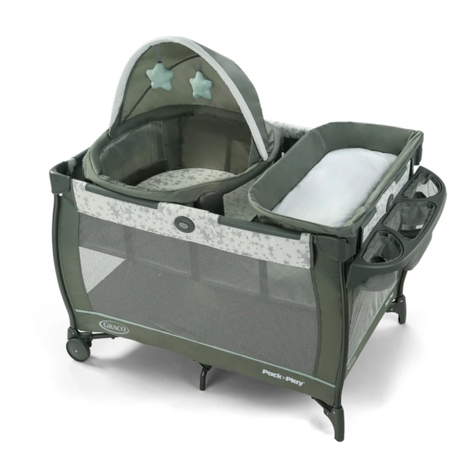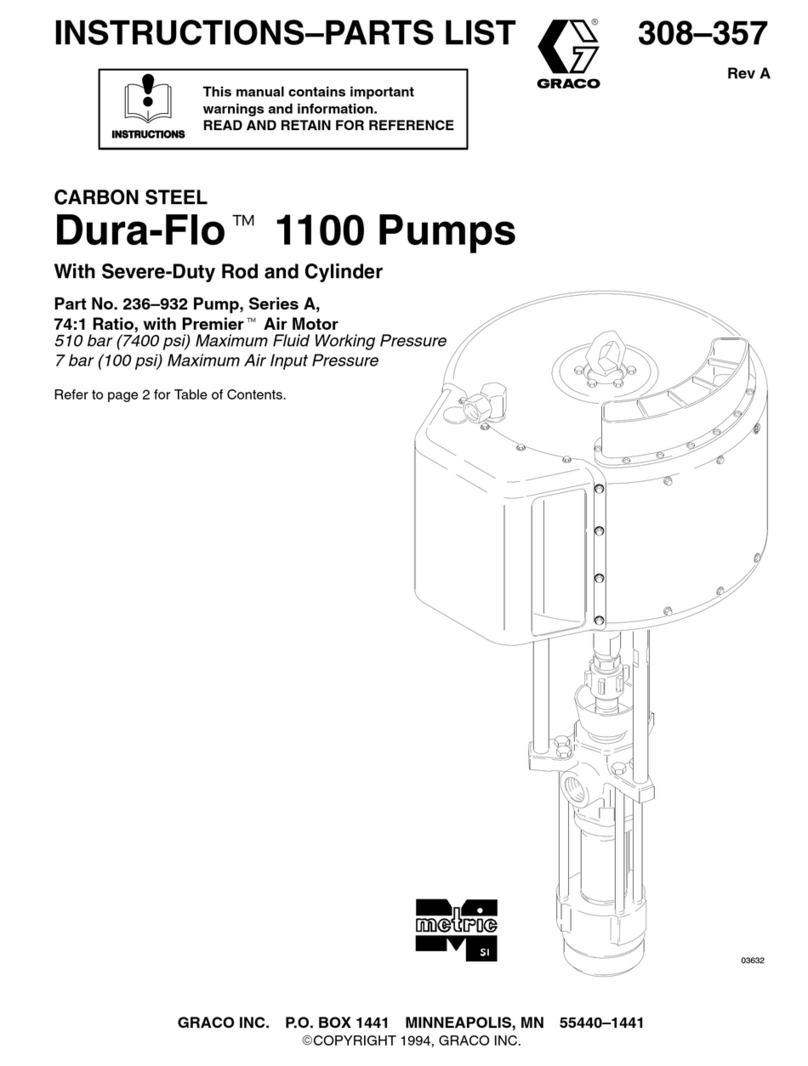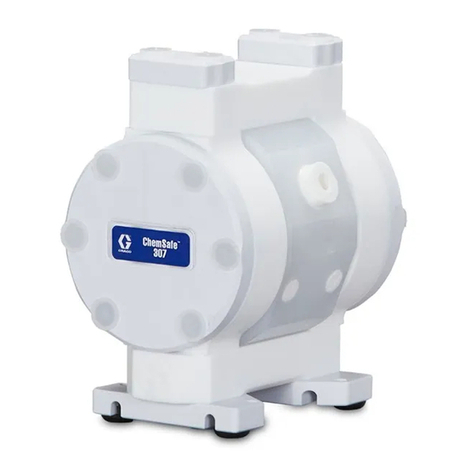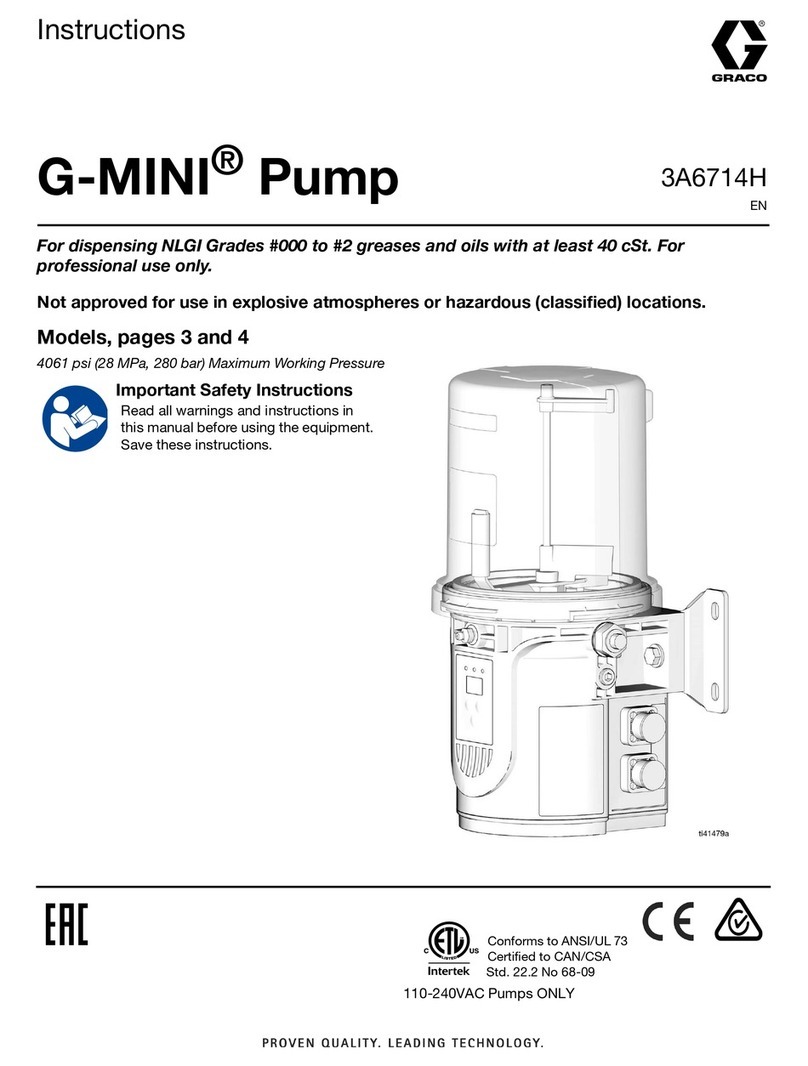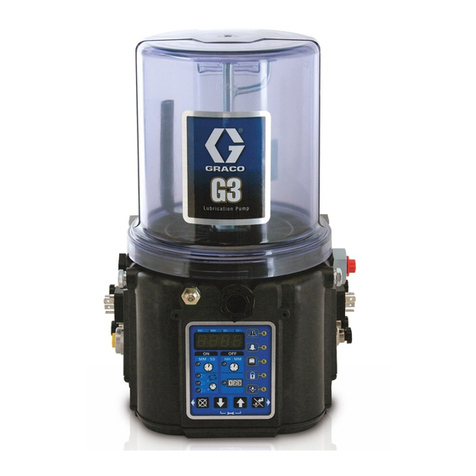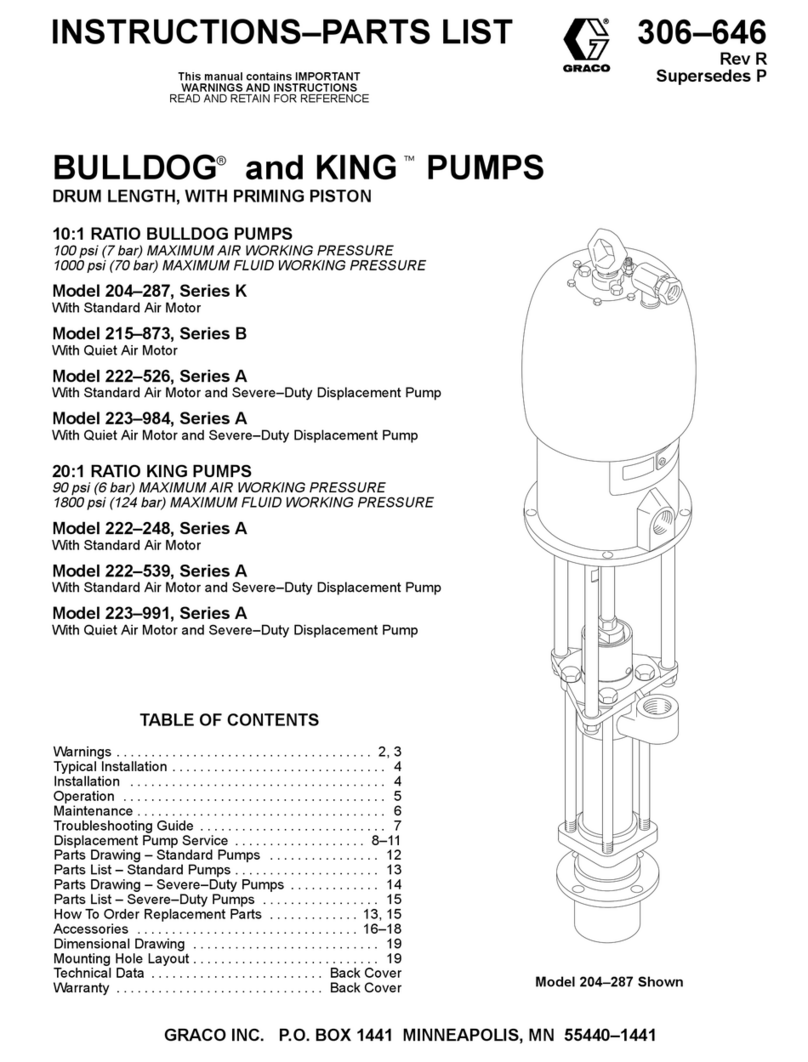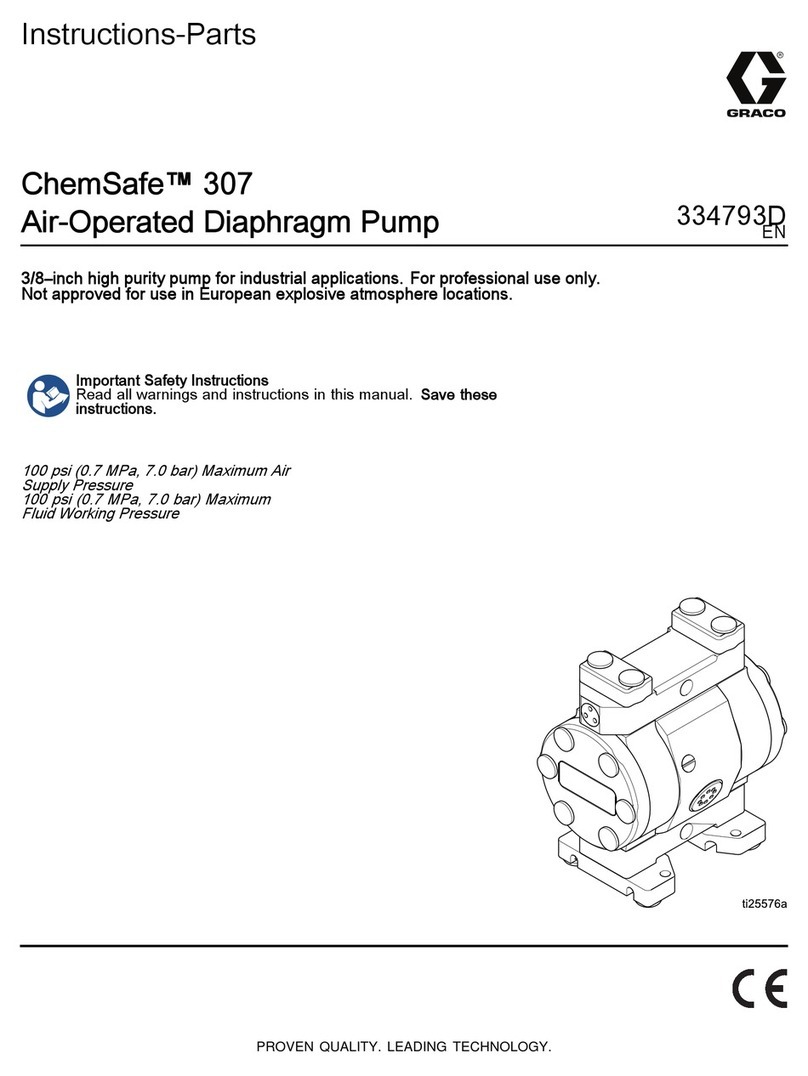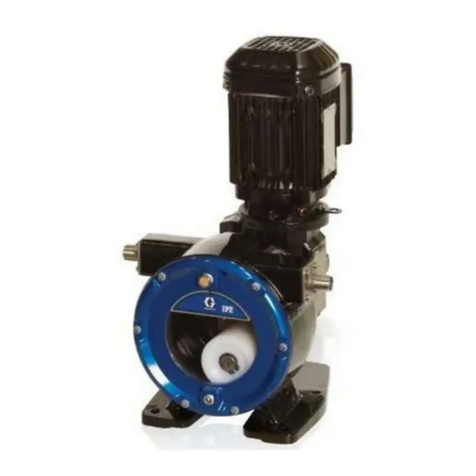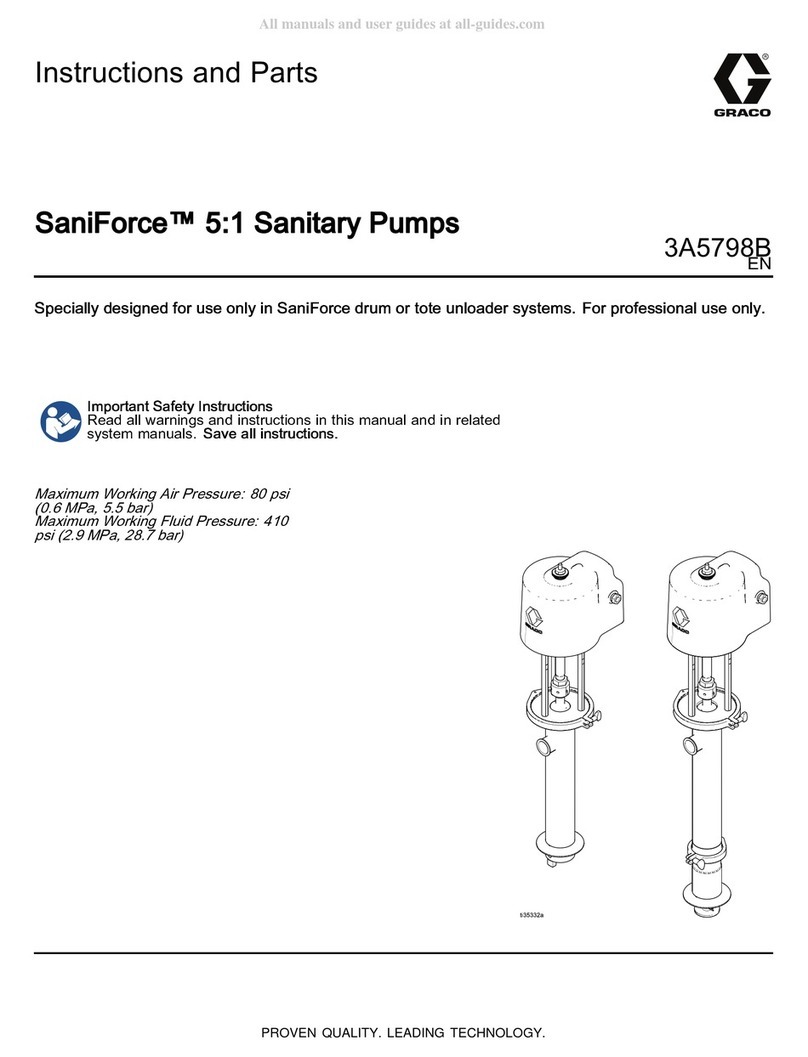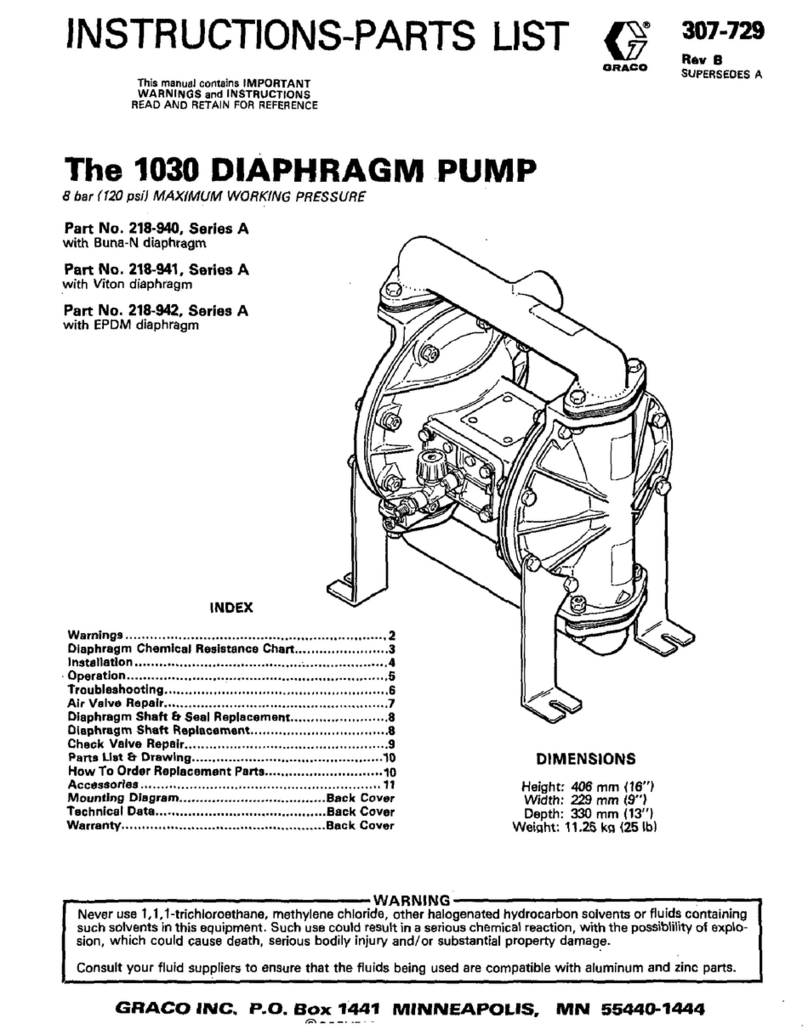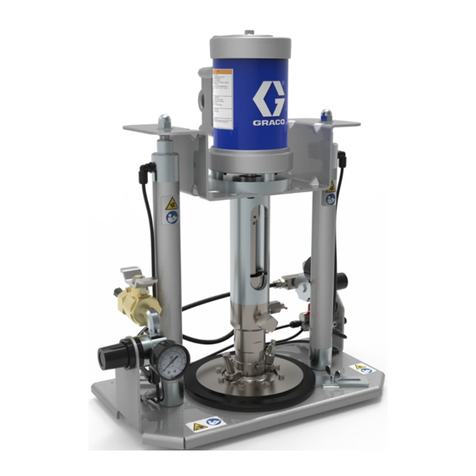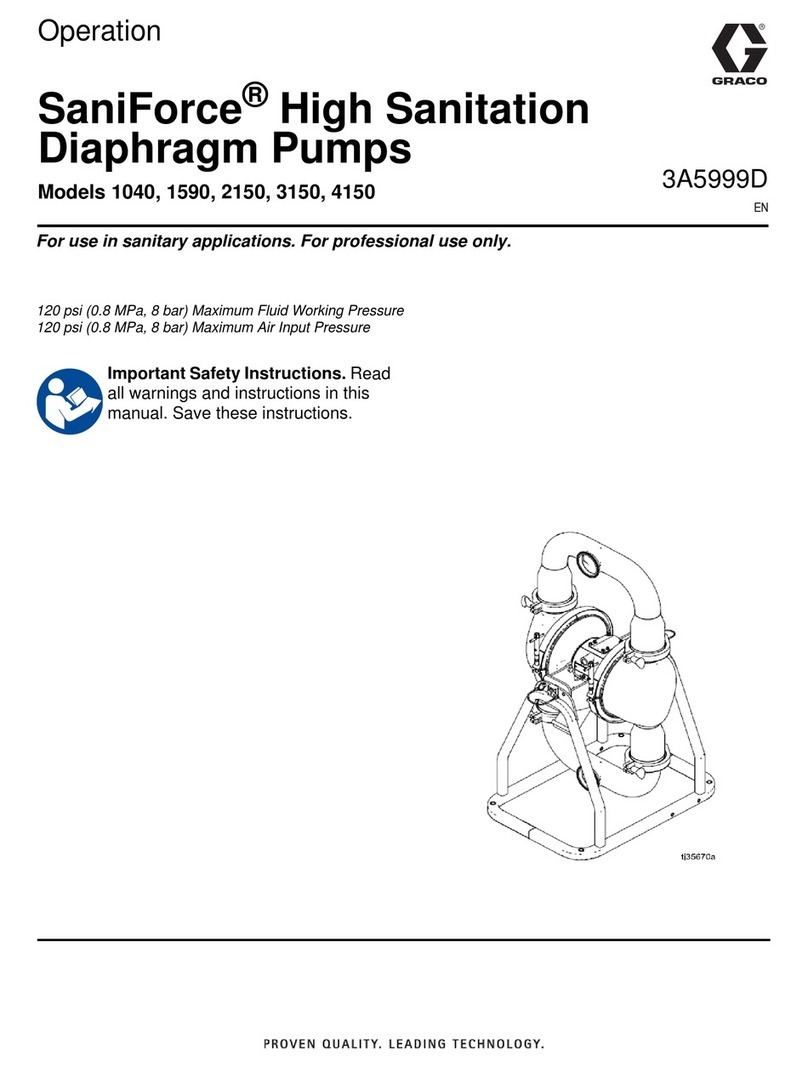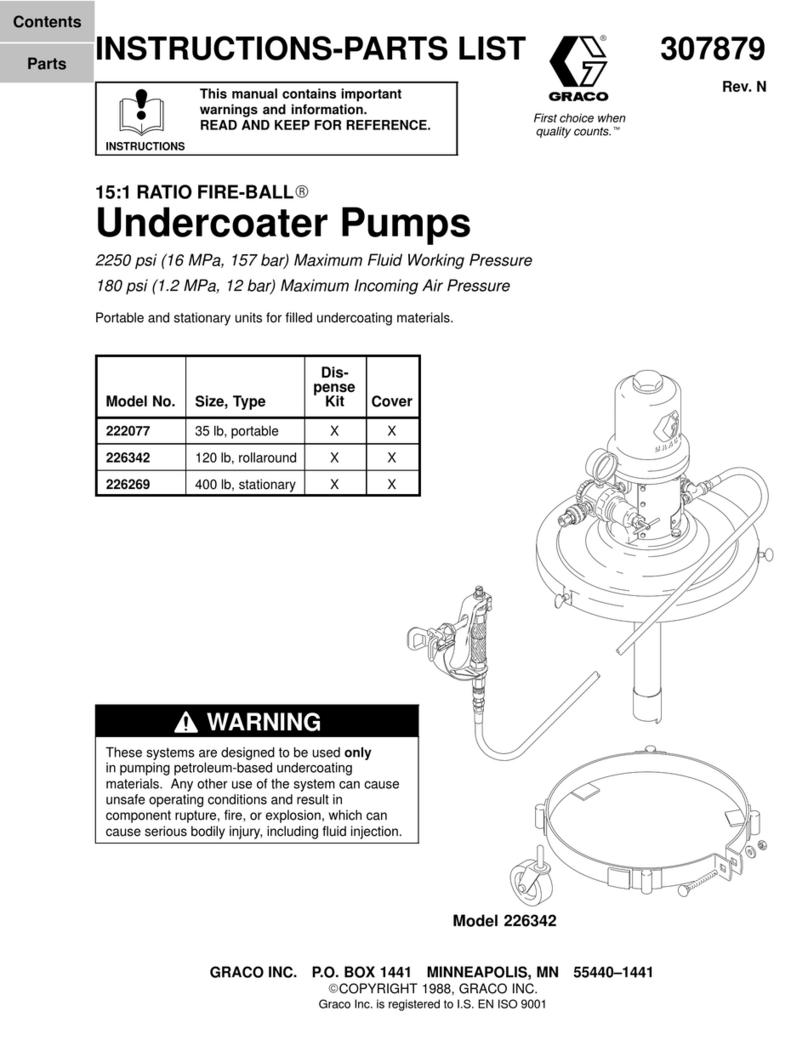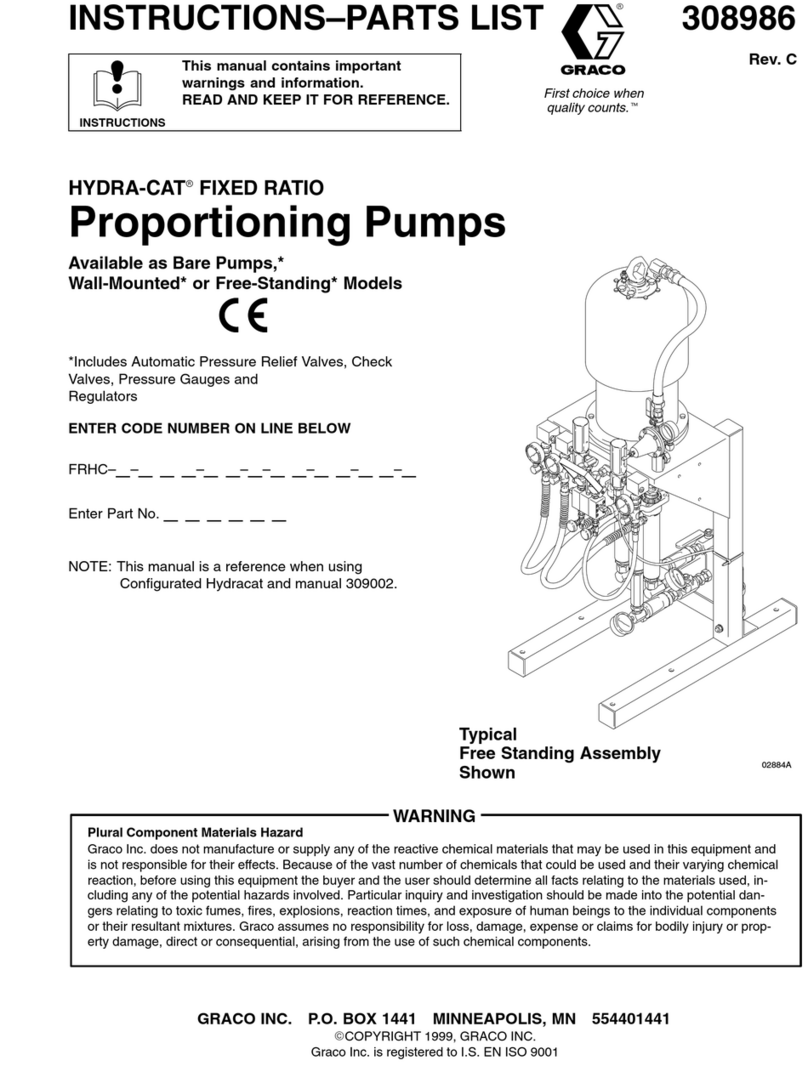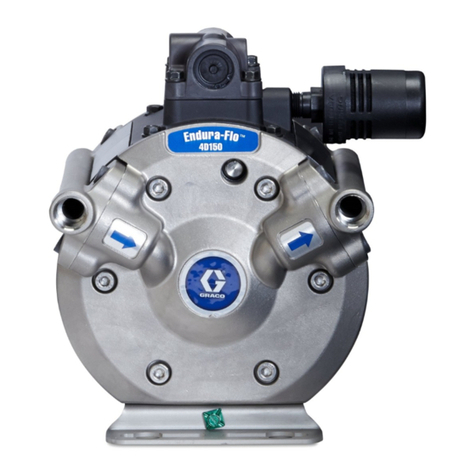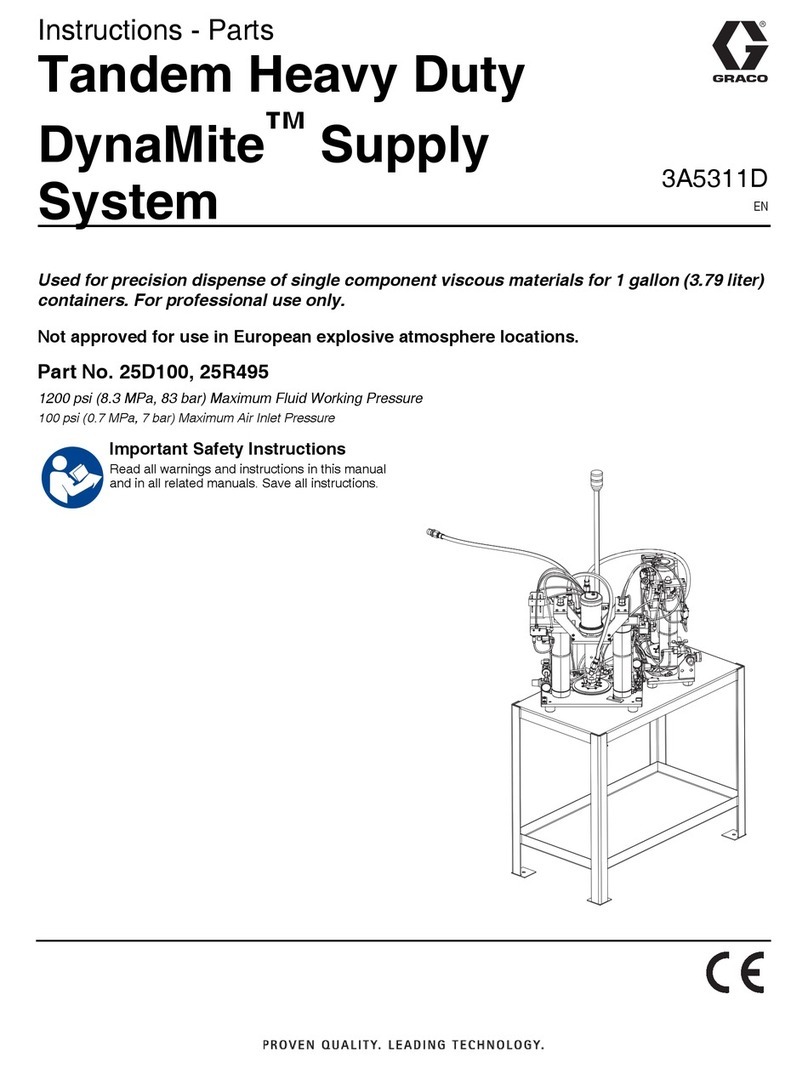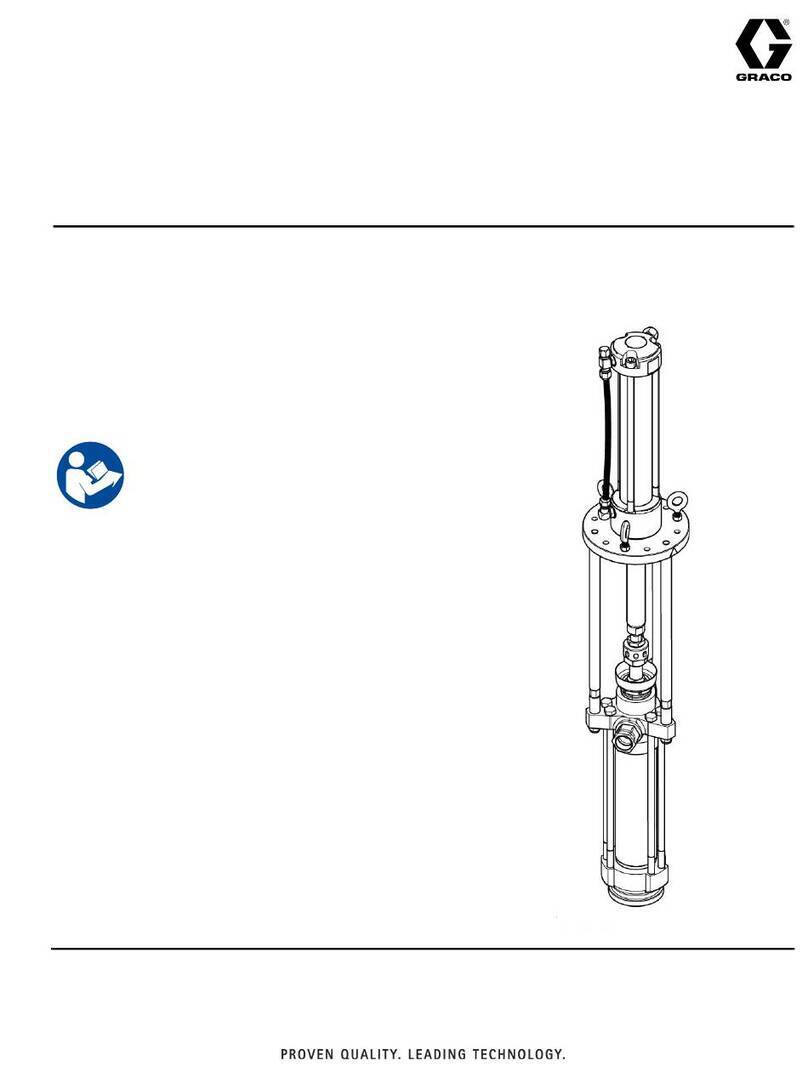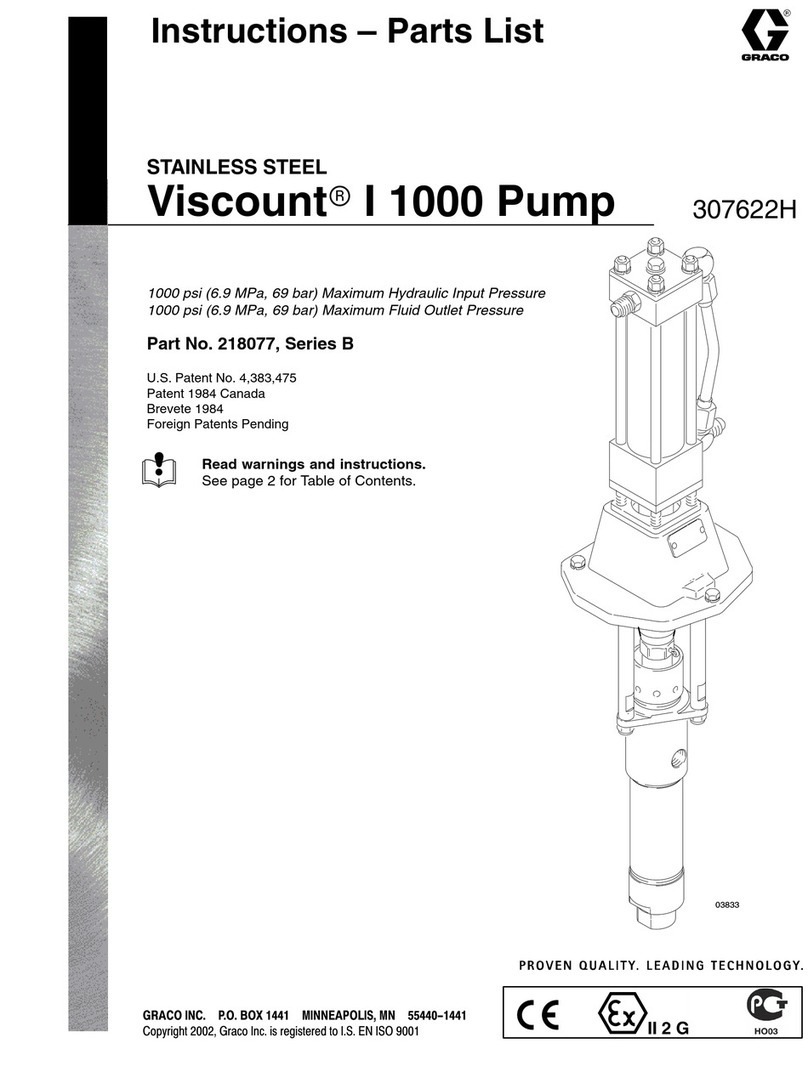
FIRE
OR
EXPLOSION HAZARD
through thepumpand hose. If every part of the spray equip-
Static electricity is created by the high velocity flow of fluid
ment is not properly grounded, sparking rnay occur, and the
when plugging
in
or unplugging a power supply cord. Sparks
systemrnaybecomehazardous.Sparkingrnay
also
occur
canignitefumes from solventsandthefluidbeingsprayed.
dust particles and other flammable substances, whether you
are spraying indoors or outdoors, and can cause a fire or ex-
plosion and serious bodily injury and property damage.
Grounding
To reduce the risk of static sparking, ground the sprayer and
all other spray equipment used or located in the sprayarea.
structions for yourarea and type of equipment and be sureto
CHECKyour localelectricalcodefordetailedgrounding
in-
ground all of thisspray equipment:
1.
Pump:
usegroundwireandclamp as shown in Fig 1.
2.
Air and
fluid
hoses: use only grounded hoseswitha max-
imum of
500
feet(150 ml combinedhose length to en-
sure grounding continuity.Refer also
to
HOSE
SAFETY.
A
B
C
Fig
1
Togroundthepump,loosenthegrounding lug locknut
(AI
and washer
101.
Insert one endofa 12 ga (1.5 mm'l minimum,
securely. See Fig 1. Refertopage 9for ordering a ground wire
ground wire
ID1
intothe slot inlug
IC1
and tighten the locknut
true earthen ground.
and clamp. Connect the clamp end of the ground wire
10
e
Flushing
Safety
are properlygrounded.Refer to Grounding, above.Follow
Before flushing, be sure the entire system and flushing pails
the Pressure Relief Procedure on page
2,
and remove the
mrav
ti0
from the om. Alwavs use the lowest oossible fluid
3.
Spray
gun:
obtaingroundingthroughconnection to a
.
presiuie, and mainiain firm metal to metal coniact between
properly grounded fluid hose and pump. the gunand the pail during flushing
to
reduce the risk of injec-
tion injury, static sparking and splashing.
4.
Air compressor:followthemanufacturer's
recommendations.
-A
"-7
5.
Obiectbeino SDraved: accordina to localcode.
~
~I~~
"
~.
.
I
6.
AI1
solventpailsusedwhenflushing,according to local
on a grounded surface.
Do
not place the pail on a non-
code. Use only metalpails, which are conductive placed
conductivesurface,such aspaper or cardboard, which
interrupts the grounding continuity.
MAINTAIN
FIRM
METALTO
MnAL
ing
pressure,always hold
a
metalpartofthegunfirmly to
OUNANDCONTAINER
CONTACT BETWEEN
the side of
a
groundedmetalpail, then trigger the gun.
7.
To
maintain grounding continuity when flushingorreliev-
HOSE SAFETY
Highpressure fluidin the hosescanbeverydangerous. If the
Hose
Grounding
Continuity
of wear, damage or misuse, the high pressure spray emitted
hose develops a pinhole leak, splitor rupture dueto any kind surfaceofthecentercore of the hose.Otherhoses on the
Graco fluid hoses have electrically conductive materialon the
from
it
can cause an injection injuryor other serious bodilyin-
jury or property damage. market may have a ground wire extending the length of the
hose. The ground wire can breakinusewhich willdestroy the
ALL FLUID HOSES MUST HAVE
SPRING
GUARDS1
The electrical groundingof the hose.
spring guards help protect the hosefrom kinks or bends at or
close to the coupling which can result in hose rupture, Tobesure of continuity.checkelectricalresistanceatleast
onceaweek.Checkoverallresistancewhenusingmultiple
hoseassemblies. If the resistanceexceads
29
megohms,
TIGHTEN allfluid connections securely before each use. High
pressure fluidcandislodgealoosecouplingorallowhigh replace
it
immediately. Ground wire hose may have different
pressure sprayto be emittedfrom the coupling. resistance; check supplier.
NEVERuse adamagedhose.Beforeeachuse,checkentire
MO~VlNG
PARTS HAZARD
hose forcuts,leaks]abrasion,bulgingcover,ordamageor
movement of the hose couplings.
If
any of these conditions
exist,replace the hoseimmediately.DONOTrecouple high
pressure hose. Never use tape or any device
to
try tomend the
hoses;
it
cannot contain
the
high pressure fluid.
HANDLE AND ROUTE
HOSES
CAREFULLY.Do not pull on
hoses
to
move equipment.
Do
not use materials or solvents
which are not compatiblewiththe inner tube and cover of the
hose.
DO
NOT exposethe hose to temperatures above180OF
(82OCI or below -40°F (-40°CI.
IMPOR
Movingpartscanpinchoramputateyour fingersor other
operating the pump. NEVERoperate thepump with the air
bodyparts. KEEPCLEAR ofmovingpartswhenstartingor
motor shield plates removedto reduce the
risk
of pinching or
amputatingyourfingers on movingparts in theairmotor.
Before checking or servicing the pump,follow the Pressure
Relief Procedure on page
2,
to
prevent the pumpfrom star-
ting accidentally.
TANT
ticularly the General Standards, Part 1910, and
the
Construction Standards, Part 1926-should be consulted.
United States Government safety standards
have been adopted underthe Occupational Safety and Health
Act.
These standards-par-
?"I-
9
~~ ~~~
